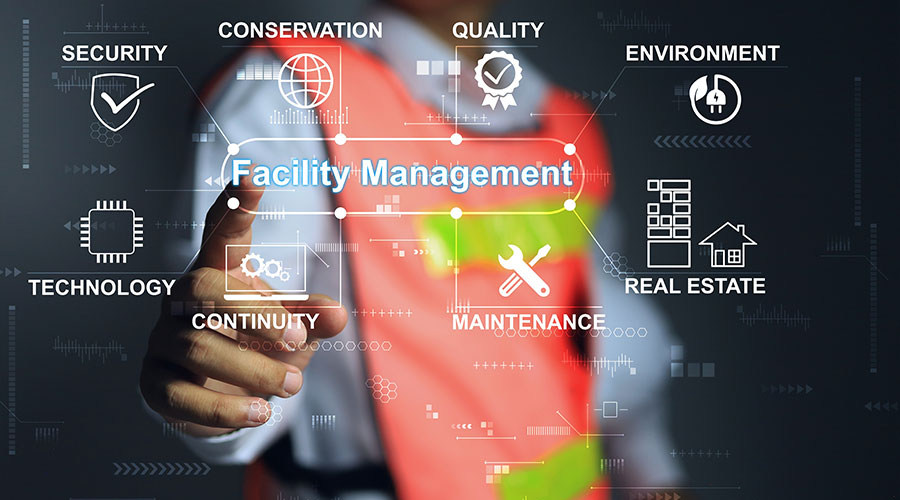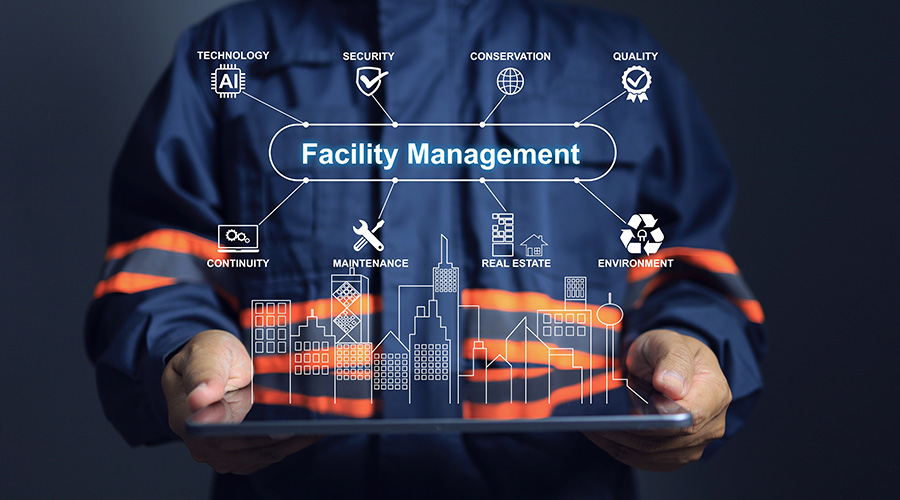How to Prepare Facilities and Staff for Reopening
Take time now to polish existing best practices and embrace innovation in workforce development.
It is an incredible time that we are living in now during the COVID-19 pandemic around the world. But what does it mean for our economy and especially for the commercial real estate (CRE) and facility management (FM) world and built environment? Though the current situation is not pretty, it can be an opportunity in several areas as it relates to our industry.
Most organizations that occupy commercial, retail, and hospitality real estate space are experiencing a very disruptive event that has required them to completely alter how and when they can conduct business. But there are still things CRE owners and facility managers can do to better position their buildings and or operation for the inevitable re-opening.
It’s clear that there will need to be some very creative solutions to be able to survive if not thrive during the next several months.
Time to Take Stock
The overall objective associated with re-opening from a facility management and facility maintenance standpoint must be that of complete readiness with the building operations. While we will not go into the economic challenges facing landlords and their tenants, the primary building operation is critical.
Everything from the lighting of the space to the security, HVAC, and janitorial operations must be performed within the strictest of procedures and industry protocols. Currently, landlords and facility managers are doing everything possible to assure tenants and employees that the spaces they work in are safe. This effort is being performed in several ways that include a strict cleaning protocol recommended by the CDC, as well as performing testing of employees entering a building with temperature scanners.
For many, it should be a time when the building operational teams are extremely busy. With no employees and tenants in their buildings the natural tendency is to do as little as possible and or just make sure that the lights are “on.” But this “down time” of the shut down and until the re-opening of several parts of the economy and businesses, presents an opportunity. Building operators that can re-evaluate and conduct the necessary assessments within their operations will be better off.
For example, some of the most important and beneficial activities that a building operational team can start on and complete involve organization. Organization can include going through the building plans and equipment records making sure they are current, filled, and accessible when needed quickly. Personal protective equipment can be reviewed. This includes a thorough assessment of what is currently available and needed in a building. PPE would include items other than just the most recent need of masks and gloves, such as face shields, temperature sensors, and other devices necessary for frequently seen emergency situations. Checking eye washes, and updating and making sure the first aid stations are up to date, are essential requirements. It is also important to assure that the lock-out, tag-out equipment is fully available and accessible where needed as well as making sure that there are updated standard operating procedures for the various emergency events that most frequently occur.
Another forgotten safety practice and procedure that is usually overlooked or ignored involves contractor protocols and building rules. During this COVID-19 pandemic, it's even more important that the building rules and regulations are upheld and not relaxed. (In a two-week project in San Jose and San Francisco at eight different buildings, it was observed that there were several contractor practices that would have normally not been allowed under a normal building environment. This could potentially compromise security as well as health and safety during this time when tenants and employees are concerned as to what human activities are occurring in their workspace and building.)
Lastly, energy efficiency is a core aspect of any building operation and should not be minimized, underprioritized, nor neglected. An efficient, sustainable operation results in a more productive and safer environment for all occupants of a building. This is critical when preparing a building to re-open.
Workforce Development
If asked within the last 60 days, most within our industry would have said that we had a high demand industry with career pathways and growth. Many economists project that the energy, construction, and utility sector is strong with a promising outlook. By all accounts we have observed that construction projects have experienced only a small delay in their operation. Regardless of the short-term economic calamity that has fallen upon us, the overall fundamentals of our economy are strong and interest rates are at an all-time low.
This COVID-19 event has confirmed that, as of this point in time, FM-related careers and positions are not only recession-proof, but pandemic-proof. Many in the CRE and FM world are naturally multi-talented professionals who have developed various skill sets and competencies that have allowed them to more than survive in their lives and career. The built environment and buildings will still be standing regardless if empty and or without tenants for a period. Buildings will still require to be maintained and taken care of as employees, and tenants will demand that their spaces be well maintained and ready for the re-start.
That said, there also is a high demand for skilled workers. This will require that the various educational institutions, colleges, trades schools, and union training programs continue to produce a skilled workforce. But how have these training programs been affected by COVID-19? The educational delivery system of Career Technical Educational programs (CTE) has been turned upside down in that training for technical skills has gone from an in-class mode to one that has to now provide social distancing and alternate methods of training. With more technical training requirements in apprenticeship programs and hands-on types of training having all but coming to a halt, creative educational delivery solutions are being developed that will address and actually allow for the scaling of these types of immersive training to an audience that previously could not have taken advantage of this training.
With CRE and FM professionals now being tasked to learn new skills as it relates to the pandemic priority facing them, this is where getting ready for the re-start will include more innovative solutions in career technical training in order to upskill a much-needed workforce. How to best deliver certain training solutions as it relates to workforce development is an opportunity. With the development of 2D, 360 videos and virtual reality learning tools advancing, the old way of conducting and delivering technical education is evolving. In the not so distant past, there was an unwillingness to move curriculum and CTE programs on-line. Now, educational programs are quickly moving towards having an option of immersive online learning tools outside of the classroom. While these challenges within workforce development training and filling the pipeline of needed, skilled workers are still problems, it’s good to know that what is currently being worked on and developed will completely open the door to a different, more inclusive type of technical training. This training will allow for greater skill development that will attract workers from other areas of industry while also meeting a high demand for career technical workers.
Preparing for the restart will include several and various existing operational best practices as well as new, innovative solutions as we move our industry and workforce to the next level of a potential booming economy.
Carlos Santamaria, RPA, MBA, LEED AP, is principal with CEES-Advisors. He has extensive experience in implementing operational best practices, energy efficient and major system upgrades that includes energy management systems, electrical systems, HVAC systems and controls. He has conducted over 250 building evaluations, commissioning, and assessments in buildings across the United States and in China. Currently an IFMA Foundation Board of Trustee assisting with its Global Workforce Initiative (GWI).
Related Topics:












